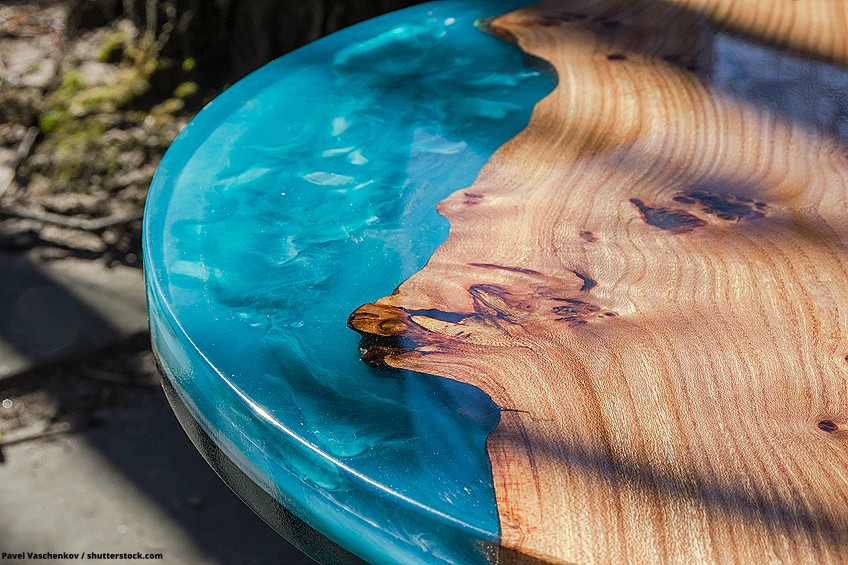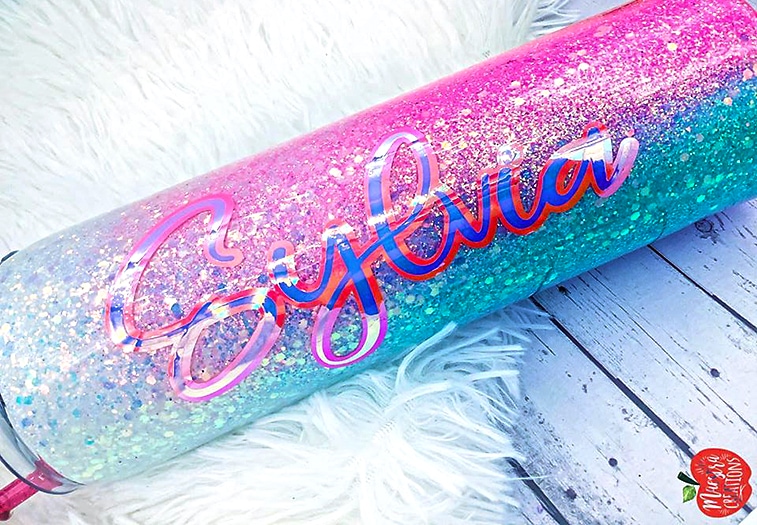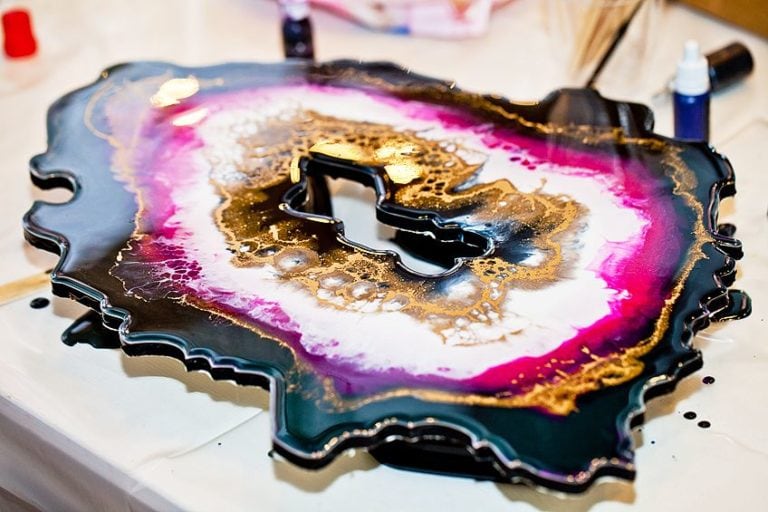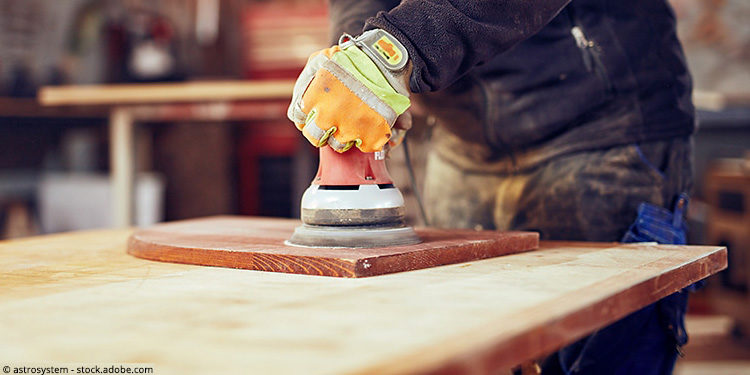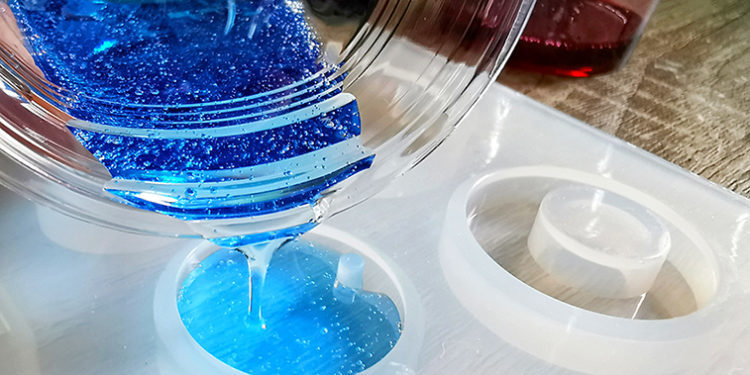Best Bar Top Epoxy – Resin as a Bar Top Coating
This post may contain affiliate links. We may earn a small commission from purchases made through them, at no additional cost to you.
If you are looking to make a bar top that is long-lasting, unique, and beautiful, we recommend you make an epoxy bar top. Epoxy is a wonderful material as it is very durable and lasts for an extremely long time, making it perfect for use on a surface which will probably have a lot of drinks and food spilled on it. What makes epoxy so durable is that it is a non-porous substance so it will not soak up any of the spills or food debris. This means that an epoxy surface will not stain, and will not allow for the growth of bacteria, mold, or mildew. Epoxy is also easy to maintain and keep clean, and is the perfect material from which to make a bar top.
Table of Contents
- 1 The Best Options for Bar Top Epoxy
- 2 Factors You Should Consider When Selecting the Best Epoxy Resin for Bar Tops
- 3 Materials You Can Coat with Bar Top Epoxy
- 4 How Are Epoxy Bar Tops Made?
- 5 Epoxy Resin Application Tips:
- 6 The Pros and Cons of Having an Epoxy Bar Top
- 7 How to Clean Epoxy Bar Tops
The Best Options for Bar Top Epoxy
You will be faced with a great variety of epoxy resins when searching for the best brand with which to create your bar top. To make things easier for you, we have chosen our top three products for making an epoxy bar top.

PROMARINE SUPPLIES Crystal-Clear Table Top Epoxy
ProMarine as a manufacturer is highly respected and trusted within DIY circles. Although their epoxy is a new product to the market, they already have the consumer’s trust thanks to their positive brand association for producing high-quality products. One of their great products is that of the crystal-clear bar table resin, which is the ideal epoxy coating kit.
- Produces a tough, high gloss, water-resistant coating
- Designed for table tops, bars, and wood finishes
- UV-resistant formula
This product is long-lasting and durable when applied as a coating to wood. This resin provides the ideal coating on almost any wooden furniture, such as artworks, open bars, or tabletops. The mixture will cure to give you a glossy appearance and will add to the overall beauty of your furniture piece.
This crystal-clear resin has a water-resistant formula and is protected from UV rays, where the UV protection allows you to utilize this particular resin for outdoor items that are not directly exposed to sunlight. The resin is also scratch-resistant, making it a great option for those with any pets or children. It has an FDA approval, which means that you can use it on a surface that will have food on it, such as a dining table or kitchen countertop. The resin can be used anything in your kitchen, although it is not a great idea to use on wooden spoons.
Pros
- Self-leveling
- Glossy and durable finish
- Water-resistant
- Food-safe
- Easy to use
- Blush-resistant
Cons
- Limited outdoor use
RTG Bar and Table Top Epoxy
RTG offers you a durable surface that is also beautiful, providing you with a glossy finish unlike any other resin. RTG looks almost wet when it has set completely – that is how glossy it is. The product gives you an ultra-clear and durable coating that will last for a long time. The coating is resistant to scratches, stains, and yellowing.
- 2-part waterproof, ultra-clear epoxy resin coating
- Self-leveling formula cures to a tough, smooth, high-gloss finish
- Color-stable formula resists yellowing
RTG is easily customizable, and you will be able to embed anything into it that you desire. Examples of items that you can embed in the epoxy include magnets, bottle caps, pennies, or any other mementos that fit underneath the coated surface of this resin.
RTG epoxy isn’t difficult to use, as it has been formulated so that even a beginner can use it without facing any problems. You just have to follow the standard process of mixing the hardener and resin in equal portions (1:1 ratio). Once mixed, you can then pour it onto the surface.
You may create some bubbles when you pour your RGT epoxy onto the surface, but the majority of the bubbles will pop automatically. If a few bubbles remain beneath the resin coating, you can use hot air over the surface to remove these bubbles. By applying heat, the bubbles are caused to rise to the surface and will pop. RGT also has amazing heat deflection properties, which make it an ideal product to use in your kitchen, as you will be able to place hot food dishes (up to 125 degrees Fahrenheit) directly onto the cured surface.
Pros
- Self-leveling
- Durable and resistant to yellowing
- Simple mixing ratio
- Easy to use
- Heat- and UV-resistant to a point
- Cures quickly
- Resistant to amine blush
Cons
- Not intended for outdoor areas exposed to sunlight
- Shorter working time
EAST COAST RESIN Crystal-Clear Epoxy Resin
East Coast Resin is the ideal epoxy resin if you are looking for a shorter curing time. This particular resin takes only 16 to 20 hours to cure. Like with any resin, the total curing time is heavily impacted by the number of layers you apply, although this is still a faster option than other resins. It is a great option if you wish to coat outdoor pieces with many layers of resin.
- Flawless crystal-clear coating
- Resistant to UV rays, scratches, and water
- Safe and odorless
Although this resin can be used on outdoor furniture, it is more suitable for use on indoor pieces. The resin can be applied with ease and is crystal-clear. When applied to any type of wooden surface, the resin will eliminate fish eyes, trickling, crawling, and craters.
This resin will transform your surfaces, countertops, or any other projects. Its transparent appearance brings life to the surface and creates a vibrant coating. This brand of resin has almost no smell, and the manufacturers even mention that no mask is needed when working with it.
A lot of research and development has been put into this resin by their manufacturing team, ensuring that this product is of the highest quality, and stands out above and beyond when compared to other resins on the market. The fact that the resin is resistant to UV light, water, and scratches ensures that it is more versatile than other resins available. This resin is of a food grade safety, which makes it the ideal choice to use in your kitchen DIY projects.
Pros
- Smooth, crystal-clear finish
- UV-, scratch- and water-resistant
- Food-safe
- Odor-free
- Easy to apply
Cons
- Prone to bubbles
Factors You Should Consider When Selecting the Best Epoxy Resin for Bar Tops
Should this be your first time DIY-ing wood repairs, it is important to remember the following before purchasing your wood furniture epoxy:
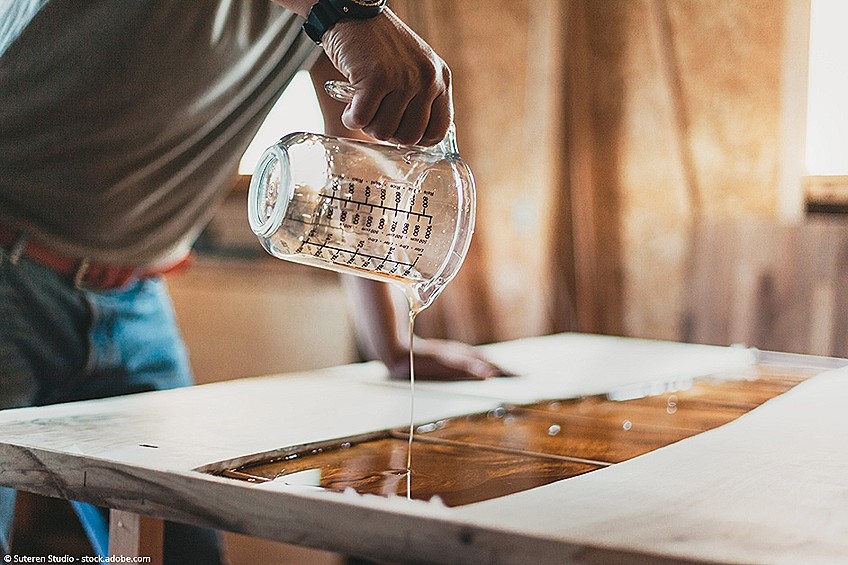
Coverage Capacity
When selecting the best epoxy resin you will be working with, you should always check what the coverage capacity of the resin is. The coverage capacity refers to how much resin you will get per ounce, gallon, or pint. Anything more than a coverage of 25 square feet is a bargain, as long as the formula gives you coverage of a decent quality.
Scratch-Resistance
The biggest cause of damage to wooden furniture is that of scratches. All wooden furniture gets scratched over time, and even more so if it is in a home where there are children or pets. Through using an anti-scratch epoxy coating, you can significantly decrease the chance of scratches on your surface. Such an epoxy will also further protect your furniture from any other accidents or damages.
UV-Resistance
The rays of the sun negatively impact epoxy due to the harmful effects of its UV light. If you have chosen to use an epoxy that is not UV-resistant, as time goes by your epoxy will no longer be its crystal-clear color but will begin to turn yellow. To be sure that an epoxy resin is UV resistant, double-check the packaging to make sure that it states it specifically. If you have chosen to apply an final coating over your epoxy, also ensure that the coating is also UV-resistant, otherwise you will have no choice but to keep that item of furniture indoors and out of any sunlight.
Blush-Resistance
You should buy an epoxy resin that is blush-resistant, which refers to amine blush. Amine blush is a by-product of curing that changes the color of the wooden item and can also cause a jagged edge to form on the surface of the wood. It also causes a waxy substance to develop over the surface of the resin. The majority of brands are made to be blush-free, but ensure you only apply your resin when the surface is completely dry, as doing this will stop the wooden surface from blushing.
Water-Resistance
Water can do serious damage to wood; even if your wood has limited exposure to water, it can result in significant damage. It is important to ensure your epoxy coating is water-resistant, particularly for any outdoor furniture. A bonus is that a water-resistant formula epoxy gives a glossy finish.
Ease of Use
An easier mixing ratio will help anyone working with resin to ensure the perfect results. A simple mixing ratio will allow for an optimal curing period. If the mixing ratio is complicated, you will be more likely to miscalculate the amount, which can result in your epoxy not curing at all.
High Gloss
It is up to you as to whether or not you would like a glossy finish, but we can recommend it as it gives an attractive finish to your pieces of wooden furniture. A glossy finish adds clarity and brightness to your piece, and it is why a lot of people choose to use a glossy finish. You can achieve a glossy finish by choosing a product that advertises a crystal-clear finish, although a mirror-like resin will also achieve similar results.
Materials You Can Coat with Bar Top Epoxy
By applying the epoxy resin, you can revitalize or restore worn, old, or outdated bathroom bar tops, kitchen bar tops, and floors. It is not an option to purchase pre-made epoxy finished bar tops or slabs like quartz, marble, granite, or laminate bar counters. Instead, you will have to construct them in place.
It can be noted that Corian is a resin-based bar top material that you can purchase in slabs, and that epoxy is thought of as a solid-surface bar top as well.
Epoxy resin is a durable option to use for refinishing, as it is scratch resistant and will give you years of use before it begins to dull. The majority of cleaning products can be used on epoxy resin, without causing any damage to the overall luster.
You can use epoxy resin on most materials used to make bar tops, including:
- Concrete,
- Formica,
- Wood,
- Ceramic, and
- Metal.
Epoxy resin isn’t usually used on granite or marble bar tops, as there are alternative options to finish these materials that give better results. You can use epoxy to recreate the look of these materials at a small price in comparison to granite or marble. You can also use epoxy resin as a sealant for concrete bar tops. Keep in mind that there is an assortment of epoxies available on the market, some of which are of a better quality than others.
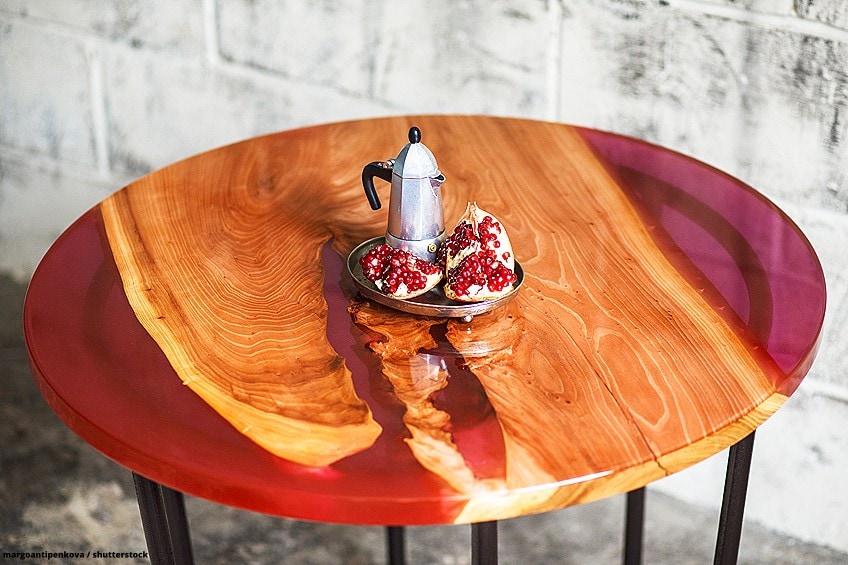
How Are Epoxy Bar Tops Made?
To create the epoxy required to make your bar top, the first step is to combine your resin with your hardener. When combined, the two liquid substances become solid when the epoxy resin is left to cure.
The biggest disadvantages to working with epoxy are that it cures and hardens quickly, and can be difficult and potentially quite messy to work with. But the work is completely worth it, as when done you will have a crystal-clear and glossy finished surface (unless you have chosen to use an epoxy product that is textured).
You can add roughly one-eighth of an inch of a shiny protective coating, depending on the amount of epoxy that gets used. To make your epoxy bar top you can either hire a professional, or you can buy an epoxy bar top kit. By using epoxy, you can save yourself a lot of money and create some unique designs to upgrade your kitchen bar tops or bathroom, although it will take a lot of work and the results can be unpredictable.
Epoxy Resin Application Tips:
To use epoxy resin, you will need to ensure you have prepared all your materials beforehand. You can then mix the resin and hardener according to the specified mixing ratio and apply the epoxy resin, taking note of the following guidelines:
- Be sure to thoroughly clean the bar top. Should there be any dust or dirt on the surface that has not been cleaned off, it will be sealed in when you apply the epoxy resin. This would then be visible in the coating and can cause an unlevel surface.
- Use plastic sheeting to protect floors and cabinets. As epoxy resin is in liquid form when it is applied, it will often spill over the edges of the bar top, landing on nearby surfaces. You can temporarily apply a piece of wood, or another form of a barrier around the edge of the bar top so as to stop the epoxy from landing on unwanted areas.
- Begin with a thin coating to form a seal. You do this by combining the hardener and epoxy resin in a container and then pour it onto the bar top. The process of applying a thin coat as a sealant is referred to as flooding and decreases your chance of bubbles forming.
- Once the two substances are combined, the epoxy will harden quickly. You have roughly 20 to 30 minutes to work with the epoxy resin before it begins to set. Should any air bubbles form, you will need to attempt to remove them immediately by using a torch or blow dryer, as the heat will cause the bubbles to rise to the surface.
- Allow your epoxy resin to harden before beginning with your second layer. After a few hours, your epoxy resin will be hard enough that you can begin adding the second layer. After 24 hours the epoxy resin will have cured to give you a stunning epoxy finished bar top.
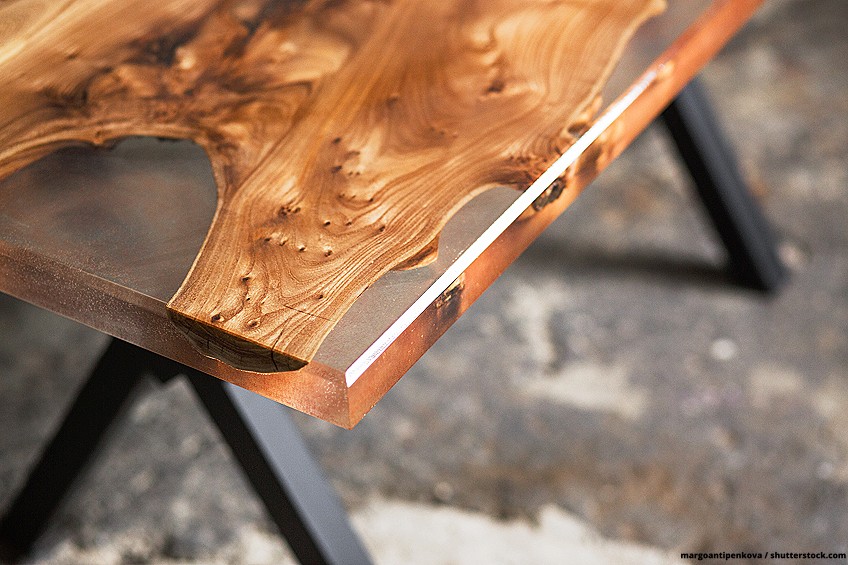
The Pros and Cons of Having an Epoxy Bar Top
There are many advantages to using epoxy resin over your kitchen table or bar top, but with these benefits come some disadvantages as well. It is important to have good understanding of both sides of epoxy resin so as to make an informed decision.
Pros
- High gloss finish
- Easy to clean
- Durable
- Food-safe once cured
- Heat- and water-resistant
- Seamless surface
- Unlimited design potential
Cons
- Time-consuming
- Brand qualities vary
- Difficult to apply
- Prone to stains, discoloration, and yellowing
- No second chances
The Advantages of Bar Top Epoxy
Epoxy resin has skyrocketed in popularity due to its many advantages and uses. This material produces an extremely durable, glossy finish, is easy to clean, safe to use with the proper precautions, resistant to heat, scratches, and water, and can be used to accomplish almost any project.
High Gloss Finish
Epoxy provides you with a glossy, polished finish with an incredible shine. Over time, the glossy sheen will wear down, but you can maintain it by applying mineral oil to the surface on occasion.
Easy to Clean
You will be able to use almost any cleaning products on your epoxy surface without any concern that you may damage it. The nonporous surface of epoxy resin ensures that bacteria and mold are unable to grow on it.
Durable Resin Finish
Once the epoxy has hardened, it forms a solid surface that is very durable and will last for years, while still providing a gorgeous shine. For other products such as varnish, you would need to constantly reapply it as it begins to dull, but this is not the case with epoxy resin. Your epoxy finish will last longer in comparison to other coatings and bar top materials, as it rarely becomes damaged or begins to crack.
Nontoxic and Food Safe
Most of the epoxy products available on the market are non-toxic and food-safe, which are ideal for bar top surfaces. You will require good ventilation when applying your epoxy coating, as the chemicals that are activated when the resin components are combined contain volatile organic compounds (VOCs). Allow for good ventilation for a few days after application as well to allow enough time for any remaining VOCs to evaporate.
Heat-Resistant
Epoxy protects your bar top from heat damage, meaning that you can place a hot dish directly onto the surface without causing any damage. It is important to note that leaving a hot dish on the epoxy surface for a long period of time will eventually cause some damage, as while the epoxy is heat resistant, it is not heatproof. We suggest using a trivet onto which you can place your hot pots so as to protect your bar top from long-term heat damage.
Seamless
Epoxy is the only option for a bar top that can guarantee a seamless surface. Thus, this kind of material is ideal for creating unique colors and patterns.
Unlimited Design Potential
If you are looking for a versatile bar top material, epoxy is your best option. Using epoxy will allow you to create any pattern or color you can think of.
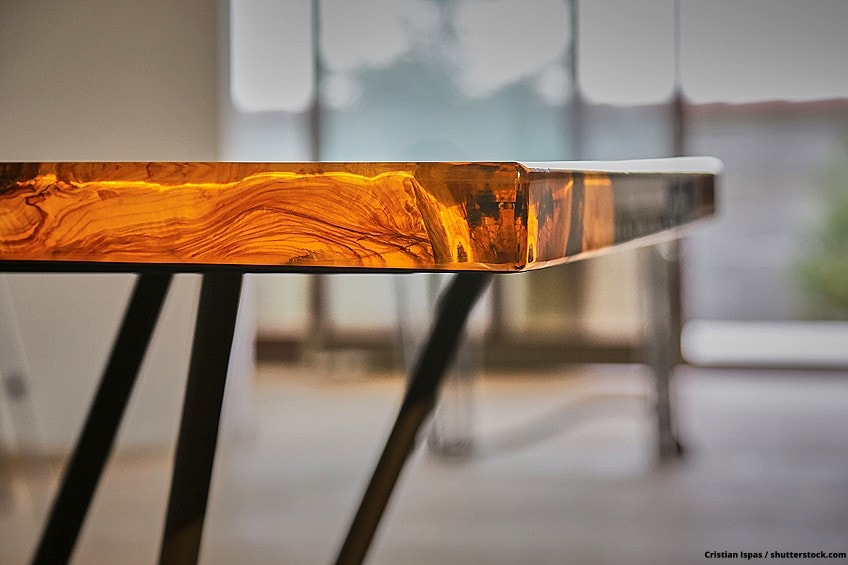
The Disadvantages of Epoxy Bar Tops
In spite of its many advantages, there are too a number of disadvantages that come into play when working with epoxy resin. Indeed, this material requires a great deal of time and effort to apply, is costly, and offers very little room for error.
Time-Consuming to Apply
Applying epoxy can be difficult, labor-intensive, and very time-consuming. It is important to ensure you have prepped your surface sufficiently before you begin. This may require you to sand down the bar tops, remove any stains, and essentially to make sure that the surface is completely clean and dry.
You will need to cover any exposed surrounding surfaces with plastic sheeting for protection. You will have to tape off and cover any cabinets, sinks, cooktops, walls, and floors around the area you will be a coating to protect them from any epoxy drips or overflow. A good idea is to get a plastic sheeting that has been pre-taped, as this will make it a lot easier to cover the areas accordingly. For the floor, you can use a heavy tarp to ensure you don’t trip or tear the plastic.
Do not rush the application of the epoxy as this can result in air bubbles forming. Once applied, the curing time can take anywhere between 24 hours to a week. You should now have a good idea as to why making a DIY epoxy bar top is not an easy or quick option.
Inconsistent Quality
Unfortunately, not all epoxies on the market will give you the same results, as the products can be very inconsistent. You will discover that many inferior products on the market are potentially less heat-resistant, or are brittle in comparison to the recommended products.
As soon as you begin to pour the epoxy, you will be able to notice the quality. Your cheaper epoxies tend to be very runny when compared to better quality epoxies, which tend to be thicker. A cheaper epoxy will give you a thin layer that won’t hold up as well in comparison to the better products. When selecting which brand of epoxy to use, it is important to always do your research and read reviews so as to make the best decision.
Challenging and Messy to Apply
Epoxy can be difficult to apply and can be very daunting for a novice DIYer. Adding an epoxy finish to an existing bar top and can be a complicated and messy process, particularly if you have never worked with epoxy before. We recommend practicing before you tackle your initial project to ensure that you do not make mistakes.
To prevent any air bubbles and to ensure that your surface is free of lumps, the epoxy will require an even application. Worst case scenario, you may have to remove the epoxy you have applied and start again, which is not only difficult to do, but it is a waste of materials and your time.
The majority of epoxy products are ‘self-leveling’, which means that they will flow across the surface and over the edge, causing the epoxy to level out automatically. This does, however, result in a lot of the epoxy dripping off the edge of the bar top.
Prone to Staining
The epoxy may be durable, but it stains very easily. You need to ensure that anything spilled on your epoxy surface is cleaned up immediately, as this will decrease your chance of permanent stains.
No Second Chances
When working with epoxy, every step is done on the fly where you can only hope for the best results. You will create any patterns and color within a very limited time frame, putting you under pressure to complete the casting before the resin begins to harden and cure.
On a positive note, you are creating something which is a once-off and is unique, although on the other hand, it can sometimes turn out looking far too much like a ‘craft project’. You can always choose to redo the epoxy surface if you are unhappy with your first attempt, but this just means more money, effort, mess, and time. We suggest that you keep the colors and pattern simple if it is your first time.
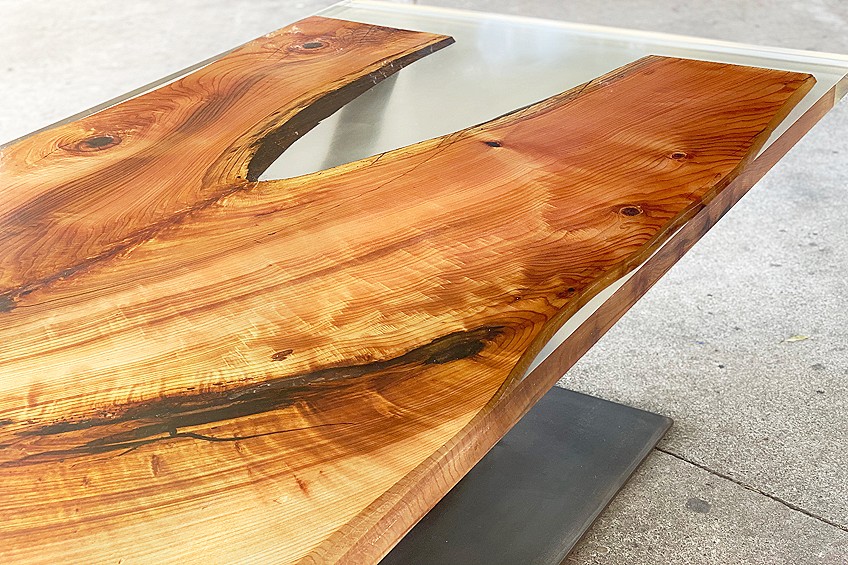
How to Clean Epoxy Bar Tops
It is very easy to clean your epoxy surfaces, as you can use an assortment of cleaning products and methods without causing any form of damage to the surface. You need to keep the following in mind though:
- Try not to use any abrasive cleaning products. These could potentially dull the surface or leave scratches. Certain abrasive cleaners can even leave swirl marks on your bar tops. Do not use polishes, waxes, or scouring pads on your epoxy surfaces.
- To ensure that the shine of the surface lasts, we suggest applying a small quantity of high-quality mineral oil directly to the epoxy surface periodically. Doing so once a week or even once a month will help to stop the surface from dulling. However, you should make sure to not use too much oil as this can result in a cloudy effect. Should you incorrectly add too much oil, be sure to wipe it up with a cloth.
- With regards to the the quality of an epoxy resin, lower-end epoxies can stain easily. One does not have to worry too much about potential staining with brands of higher qualities.
- The best way to avoid stains is to clean up spills immediately using either a washcloth or a paper towel. You can also make a baking soda paste, which can aid in removing tougher stains. You can make the paste by combining four parts of baking soda with one part water. Once you have made the paste, you can apply it directly onto the stain and leave it to sit for 5 minutes. You can then wipe it away using a cloth, and hopefully, the stain should be removed.
- If you find the stain is still there, there is one other option you can attempt. You can try using acetone or a paint thinner to remove an assortment of stains, such as those caused by berries, wine, or coffee. Using a cloth, dip it in the acetone and carefully rub it over the stain in a circular motion. Try using a bit more pressure if the stain doesn’t come out at first. Never attempt to use bleach try to remove any stains, as bleach can stain the epoxy.
Now that you have a thorough understanding of what it takes to coat your bar top with epoxy resin, you too can refurbish your countertops to create an epoxy masterpiece!
Larissa Meyer is a 32-year-old mother from Michigan and creative spirit since childhood. Her passion for painting and drawing has led her to an education as an illustrator and a career as a freelance graphic designer. She has a Bachelor of Fine Arts in Illustration and a degree in Graphic Design. Larissa is a talented artist who is able to master a wide range of styles and techniques to bring her artistic vision to life. Her greatest passion is currently fluid painting and epoxy resin art. Larissa’s love for art and her knowledge and experience in illustration make her the perfect Creative Director for our fluid-painting.com team. She is the creative head of our team and shares her passion and knowledge with our community through articles and tutorials.
As a mother of a 2-year-old daughter, Larissa also understands the importance of fostering creativity in early childhood. She uses her experience and knowledge to help other parents inspire their children and develop their artistic skills as well.
Learn more about Larissa Meyer and about us.

